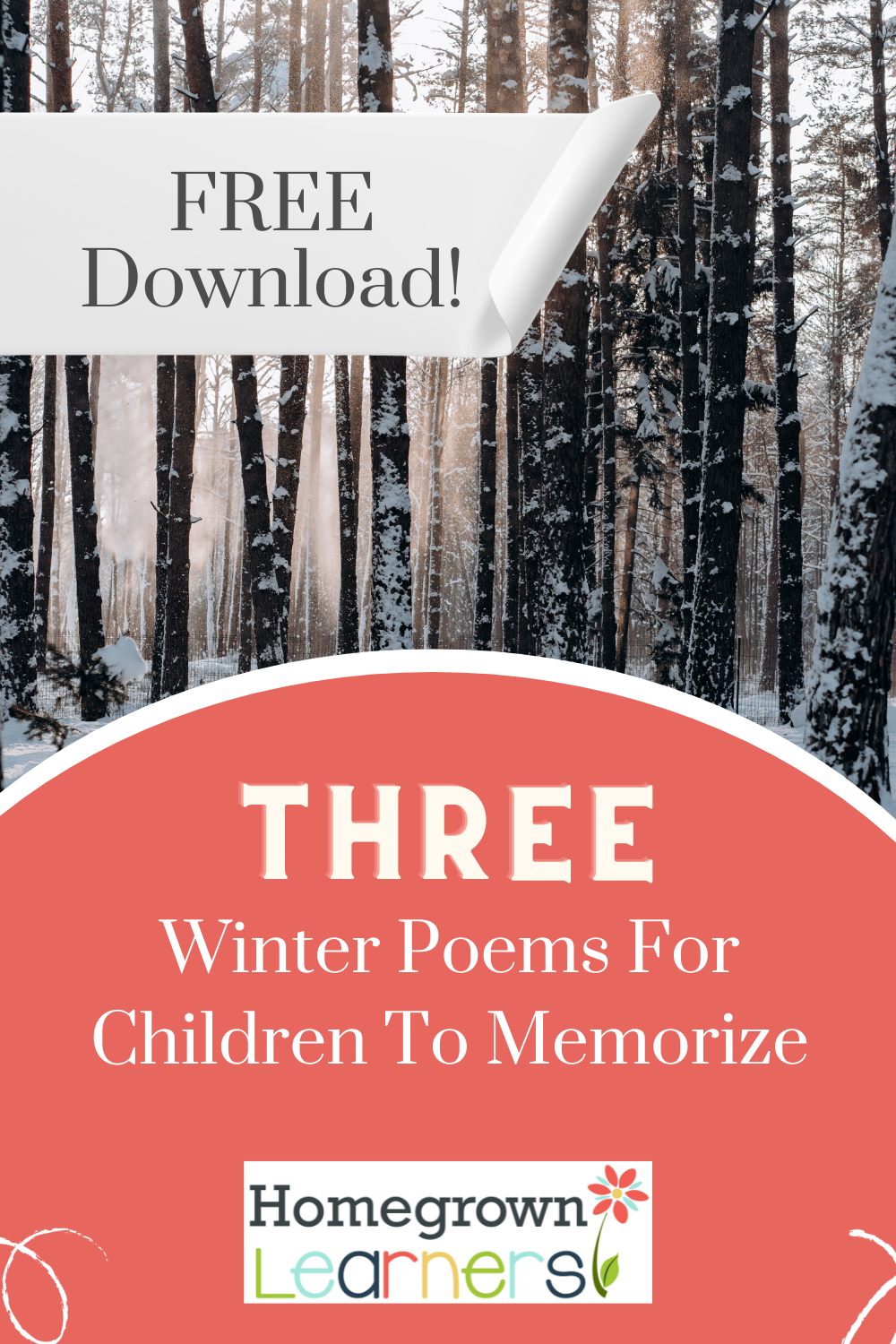“Slow and steady wins the race.”
I love that quote, don’t you? It was always quite applicable to our homeschool efforts, as well.
Small things, done with diligence and over time, can yield great results.
Copywork and memorization were key components in my children’s education, especially in their younger years. One thing I WISH we had done more was memorizing long poems - poems that would stick with my children long into adulthood. (I memorized O Captain, My Captain in 6th grade and can probably still recite much of it for you!)
To that end… I have an idea for you, and I think it will work marvelously in your homeschool.
Sara Coleridge wrote the poem The Garden Year. It first appeared in her 1834 book Pretty Lessons in Verse for Good Children. Written for young readers, the poem captures the cycle of months through vivid imagery tied to seasonal changes, offering both learning and delight. Sara Coleridge, daughter of poet Samuel Taylor Coleridge, was known for her literary talents and contributions to children's literature. The Garden Year reflects her ability to blend poetic charm with instructional value, making it a staple for teaching children about the passage of time and the beauty of nature.
(You can view the entire book online at the Internet Archive.)
How to Use The Garden Year
This poem is a lovely family project. Children as young as Kindergarten and as old as high school can benefit from memorizing together.
Print The Garden Year packet. Put the poem printable in a prominent place so your students can always see it.
Memorize one stanza each month. Use the corresponding copy work for that month as well. If you have a Morning Time, recite and copy the stanza daily. (You may want to make multiple copies of the copy work, saving your child’s best sheet for their final booklet.)
Add a new stanza each month, repeating the previous month’s stanza(s).
At the end of the year, children can recite the entire poem and have a keepsake of their work!
It’s really that simple.
There will be tremendous value in memorizing and writing this beautiful poem. It’s one of those things that everyone can look back on at the end of the year with a sense of accomplishment.
Simple Music Appreciation For the Year
Because music appreciation is my thing, I have created a straightforward plan for monthly music appreciation. It includes one piece a month with a YouTube playlist.
Visit SQUILT Music Appreciation to download that addition to The Garden Year.
Give your children a poem and TWELVE pieces of great music this year!
I hope you enjoy these freebies for the New Year! I found in my years of homeschooling that less is more and simple is best, and I’ve designed these resources with that in mind.
Happy Learning!







